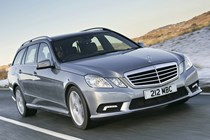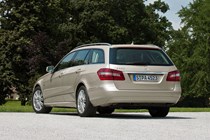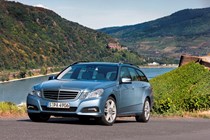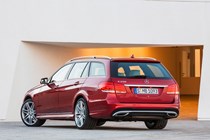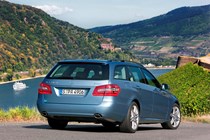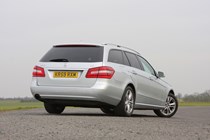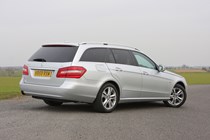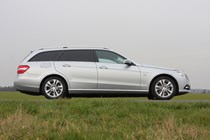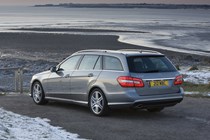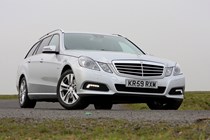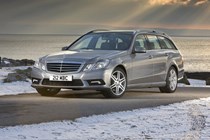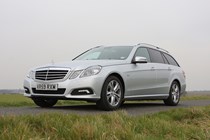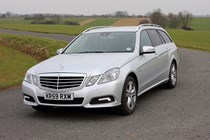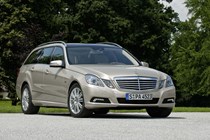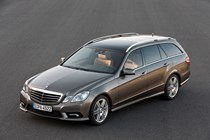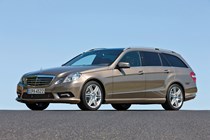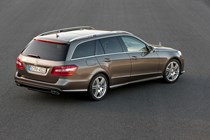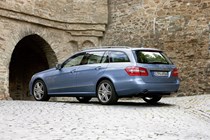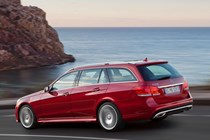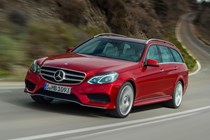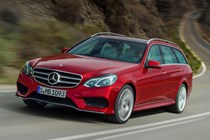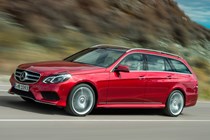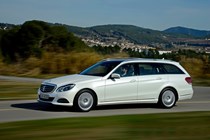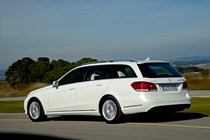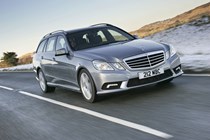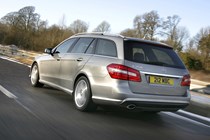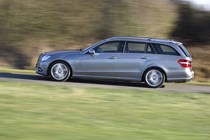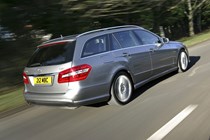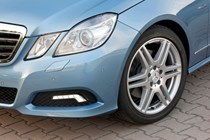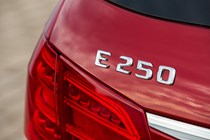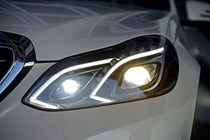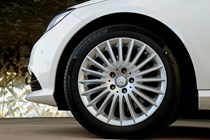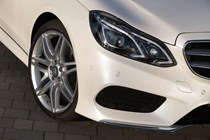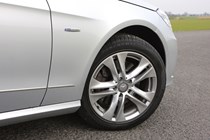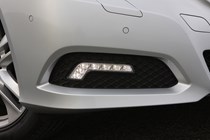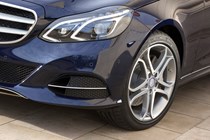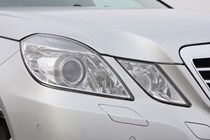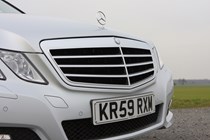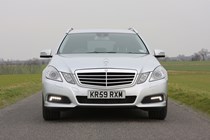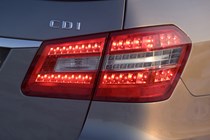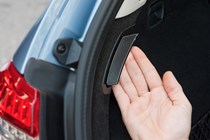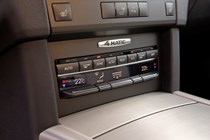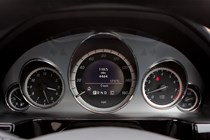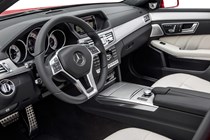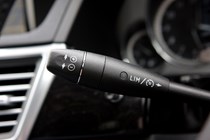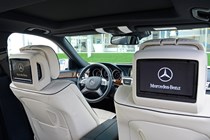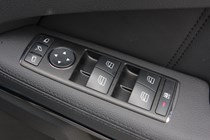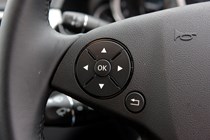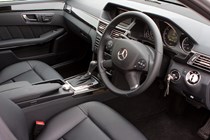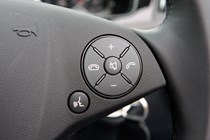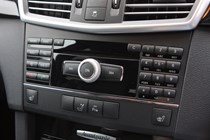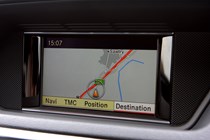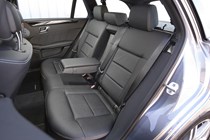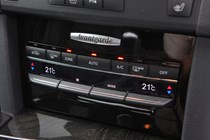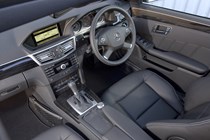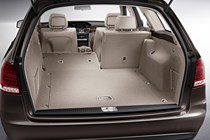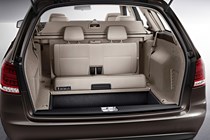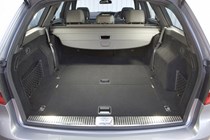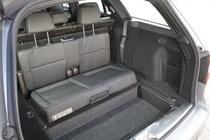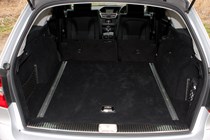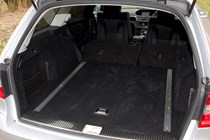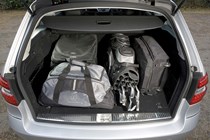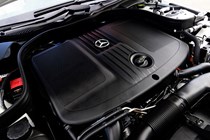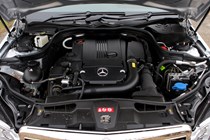
Mercedes-Benz E-Class Estate (2010-2016) engines, drive and performance

Mercedes-Benz E-Class Estate performance comes courtesy of a range of petrol and diesel engines.
Petrol engines upon launch
The C200 CGI uses a 1.8-litre engine producing 184bhp and comes with a five-speed automatic transmission.
It has very similar fuel consumption to the C250 CGI, which also uses a turbocharged 1.8-litre engine but produces 204bhp. It comes with a five-speed automatic as the only gearbox but this combination isn’t a great one. The engine feels quite lacklustre and needs to be worked quite hard to get decent pace. It’s happy to be revved thanks to a quiet and smooth nature, but it noticeably lacks the grunt of a diesel. It also struggles with a full load, especially up hills.
The automatic gearbox doesn’t help as it’s not particularly fast when shifting and often needs to be provoked to change down. It’s easy to see why the diesels account for the vast majority of cars sold and there are significant improvements here too.
Other engines are carried over from the previous E-Class estate range, including the 292bhp V6 E350 CGI and 387bhp V8 E500. Both are auto only and come with seven-speed gearboxes.
Diesel engines upon launch
Both four-cylinder diesels are offered with either a six-speed manual or a five-speed automatic. The 170bhp E220 CDI performs impressively well for such a large car, with plentiful pulling power at low revs giving reassuring acceleration while economy is a high 50mpg.
The E250 CDI is meant to replace the old six-cylinder E280 CDI – it’s more powerful than the E280 CDI and has much lower emissions, although it is lacking in the silky smoothness of the old V6 diesel. However, it’s equally as fuel efficient as the E220 CDI and emits the same 150g/km of CO2.
Engines post 2013 facelift
The range of engines was refined for 2013, and now the lowest output comes from the E220 CDI. This is also the only one available with a six-speed manual gearbox – the other models come with a smooth and refined seven-speed automatic gearbox. The E250 CDI gets 202bhp for a sprint to 62mph in 7.8 seconds while the top-spec E350 CDI has 250bhp and will hit 62mph in 6.9 seconds.
Petrol power comes from the E250, which has 209bhp and will hit 62mph in 7.8 seconds.
Lastly, you now have the option of the E300 BlueTEC Hybrid, which uses a combination of diesel and electric power for a maximum of 229bhp and a sprint to 62mph in 7.8 seconds.
Comfort seems to have been given greater priority than responsiveness with SE and Avantgarde versions of the E-Class. Mercedes-Benz says some of the lengthy development and honing was carried out in the UK, but decided not to change the existing set-up of the car. The base SE version comes with 16-inch alloy wheels and feels smooth and composed most of the time.
The Avantgarde is fitted with 17-inch wheels as standard and has lower suspension than the SE. Sport models use AMG-style 18-inch alloy wheels and have a sports chassis with different suspension settings compared with the other versions for improved grip in corners and better body control.
They also have Mercedes-Benz’s Direct-Steer system, which allows improved responsiveness at lower speeds (requiring less input to turn) and better precision and stability at higher speeds. This system is fitted as standard to V6 and V8 models.
Airmatic suspension is available as an option on six-cylinder versions of the E-Class and is standard on the E500. It offers improved comfort over the standard springs, but is also fitted in conjunction with electronic dampers with comfort and sport modes.
Facelift in 2013
Following the 2013 update, AMG Sport trim level has a sportier suspension setup which is 15mm lower and performs better through corners. SE models roll around a bit more, but the pay-off is a comfier ride.


